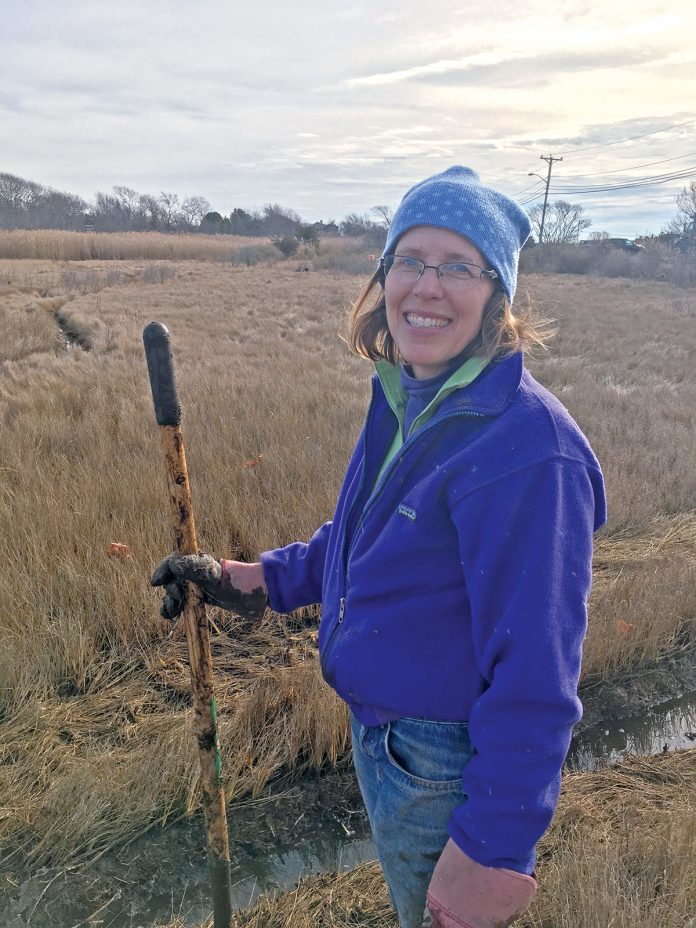WENLEY FERGUSON, director of habitat restoration for Save The Bay, recently received the Environmental Protection Agency’s New England Environmental Merit Award at a ceremony at Faneuil Hall in Boston. Ferguson was one of 28 recipients across the region recognized for their work to protect the environment.
What prompted you to work on protecting Narragansett Bay? I became interested in working for Save The Bay because I wanted to work proactively on protecting and restoring our coastal waters. I have always been connected to the salt water … from bird watching and clamming to wandering through salt marshes with my grandmother. After working as an intern for other environmental organizations, I was lucky enough to be hired by Save The Bay and put my energy toward improving and restoring Narragansett Bay.
How much has the bay’s quality improved over the years? Narragansett Bay’s water quality has improved significantly over the 28 years that I have been working at Save The Bay. The transformation of the Pawtuxet River is a telling example. [Years ago] the warm, slow-moving waters had little or no oxygen, causing the river to be almost lifeless. Thanks to major improvements in the Pawtuxet River’s water quality due to upgrades at the Cranston, Warwick and West Warwick wastewater-treatment plants, the waters of the lower Pawtuxet River now support fish. So, in just 20 years the lower Pawtuxet River was transformed from being a dead zone in the summer to a river full of life and able to support spawning river herring.
Has climate change affected the bay and, if so, how? From warming waters and shifting populations of marine life to increased intensity of rain events and coastal storms, climate change is dramatically affecting Narragansett Bay and the rivers that feed the bay. I see the direct impact of climate change and accelerated sea-level rise on the salt marshes that fringe Narragansett Bay and the salt ponds. The plants are dying off and where plants once flourished, bare mud can now be found. Marshes in our region are literally drowning in place. Once the plants die, marshes can’t build elevation to keep pace with sea level-rise.
What are you currently working on with Save The Bay to preserve the bay and its watershed? I have been working with partners at the local and state level to help marshes adapt to accelerated sea-level rise. Instead of restoring marshes from past human impacts [such as] a road crossing the marsh, we are now trying to help salt marshes adapt to rapidly increasing sea levels. Techniques include digging shallow creeks to drain water that is trapped on the marsh surface and placing dredged sand on marshes to increase marsh elevation to keep pace with sea-level rise.











